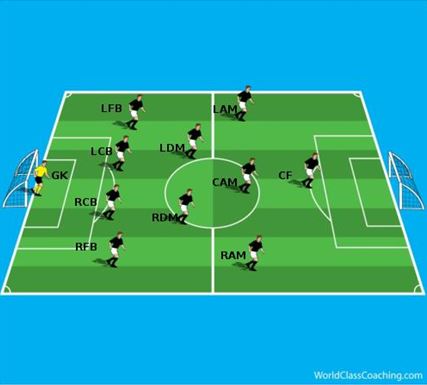Spain, the 4-2-3-1 and Tika-Taka
This post is part of the Introduction for our book, Coaching Spanish Soccer by Jordi Pascual.
THE 1-4-2-3-1 & THE “TIKI-TAKA”
“Tiki-taka” is the popular way to describe this possession style used by Spain. The journalist Andrés Montes made the name very popular, and a lot of people think that he was the first one to use it; but this is not true. The term “tiki-taka” was first used by a Spanish Coach called José María Maguregui (known as “Magu”), when he was Manager of RCD Espanyol from Barcelona, during the beginning of the 80s. With that, he gave the name to a style of playing based in keeping the ball and not going so directly to goal.
The important thing here is that the “tiki-taka”, together with the formation 1-4-2-3-1 is used by all Spanish National Teams, from U-16 to the “A” team. Everybody is playing the same way, which makes the players know how it works when following the entire path from U-16, until they arrive to the “A” team. Of course, some players arrive older to the National Team, but it is also obvious that the older they are, the more knowledge of the game they have, so it is not difficult to fit within the team.
As can be seen in the picture, there are 4 Defenders, playing in a Flat-Four, 2 Defensive Midfielders, 3 Attacking Midfielders (1 centred a 1 at each flank) and 1 Centre Forward or Striker.
First of all, let me say that I’m not a fan of “formations”. Formations, for me, is just a number or a name written on a chalkboard or a sheet of paper, and saying where a player will be at the beginning of the match. Also, it says, more or less, where the area of influence will be of that player, that’s all. Roles and responsibilities of players are given by the coach/manager of the team, not by the “position” you have. But that’s another story.
The “formation” 1-4-2-3-1 used by Spain
In the Spanish case, the Back Four is a classic from the last years in football. That means
Continue reading
